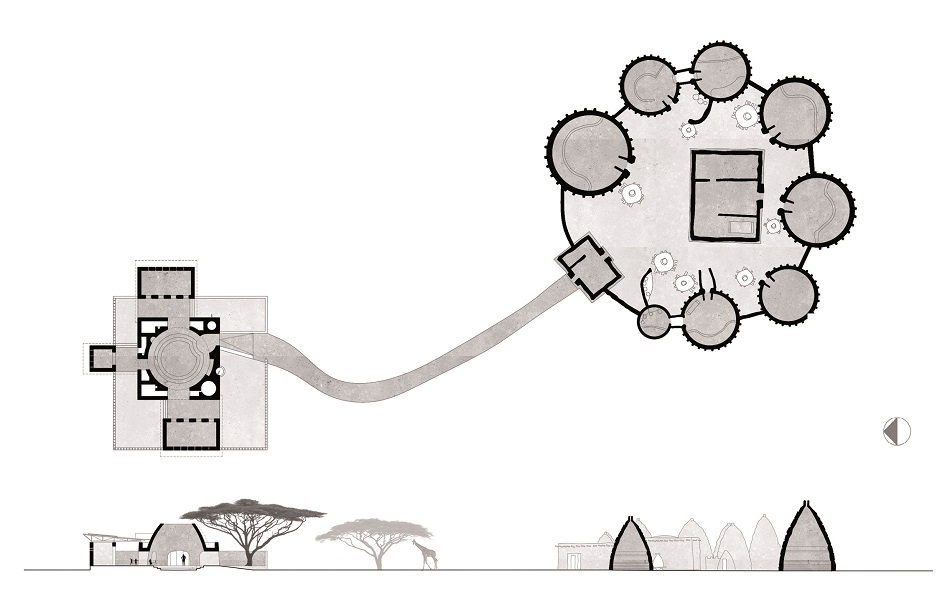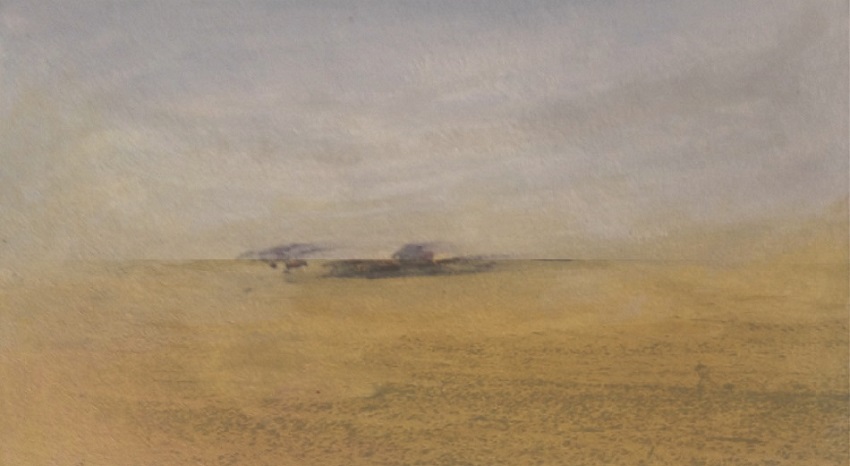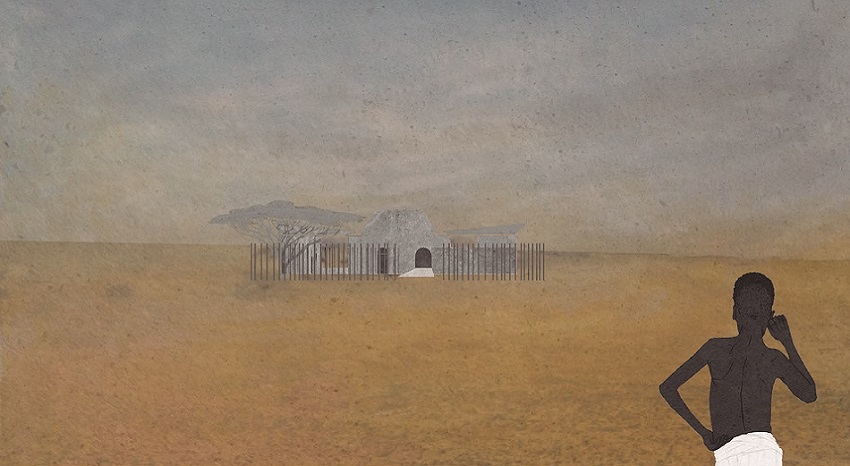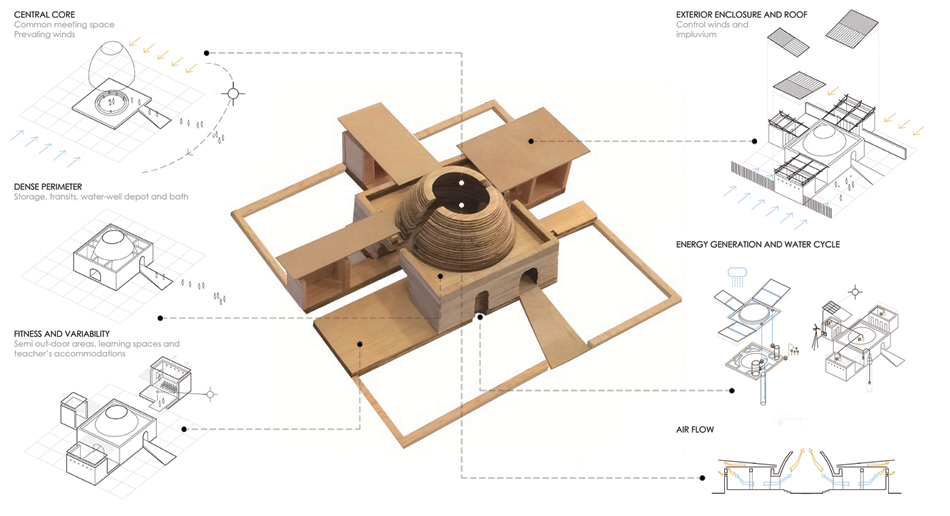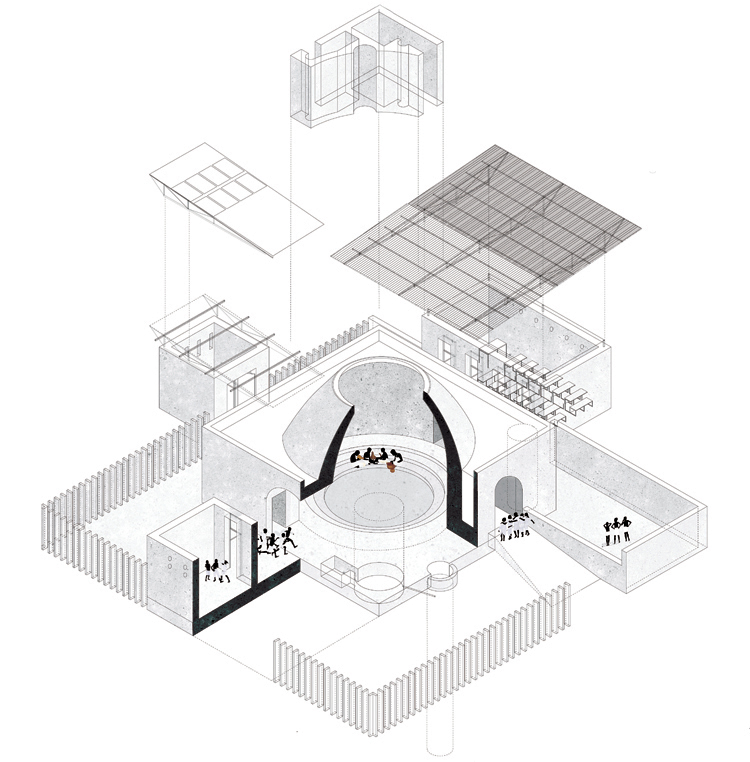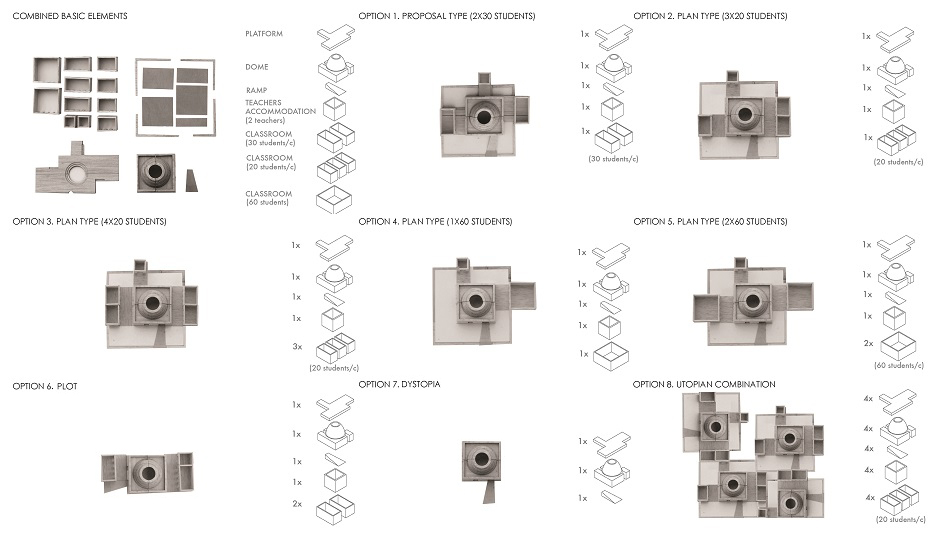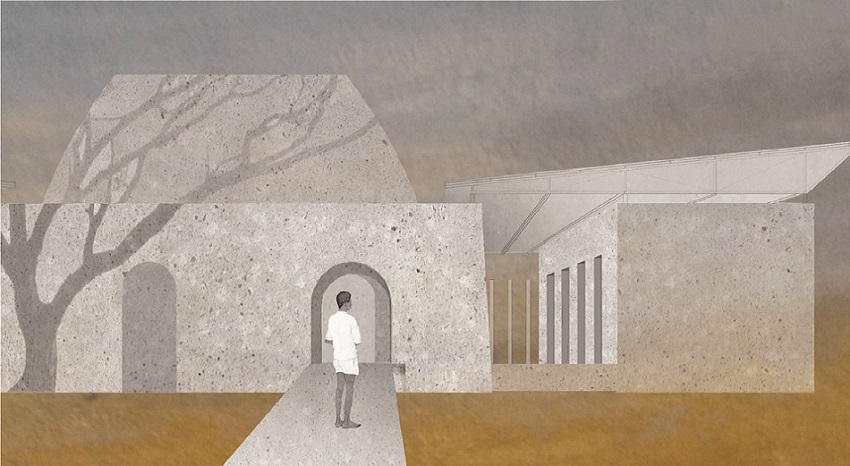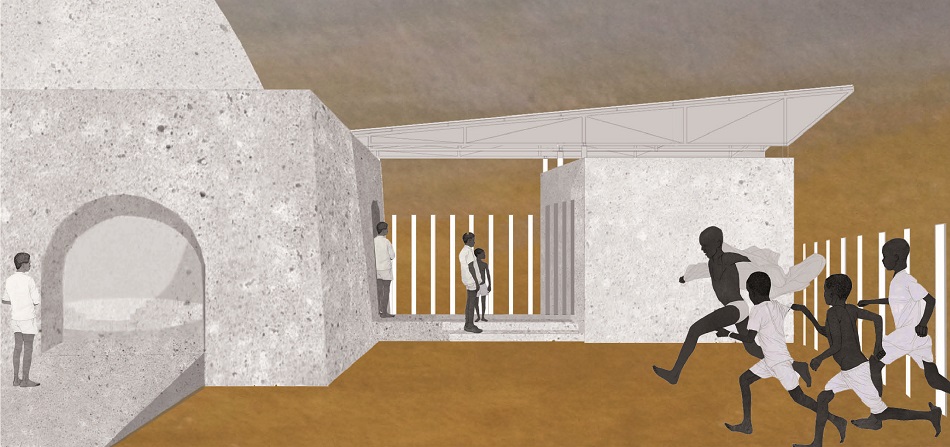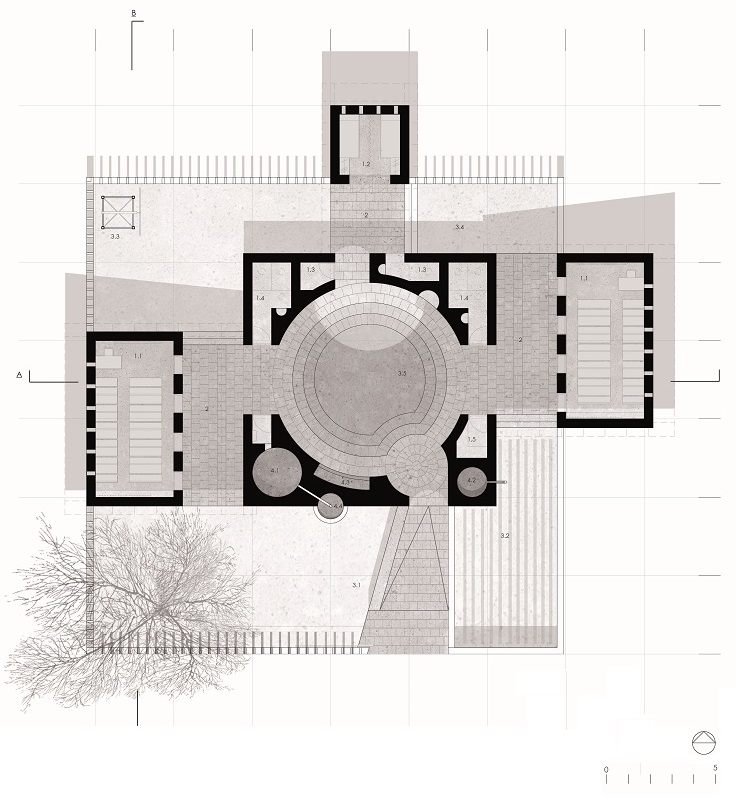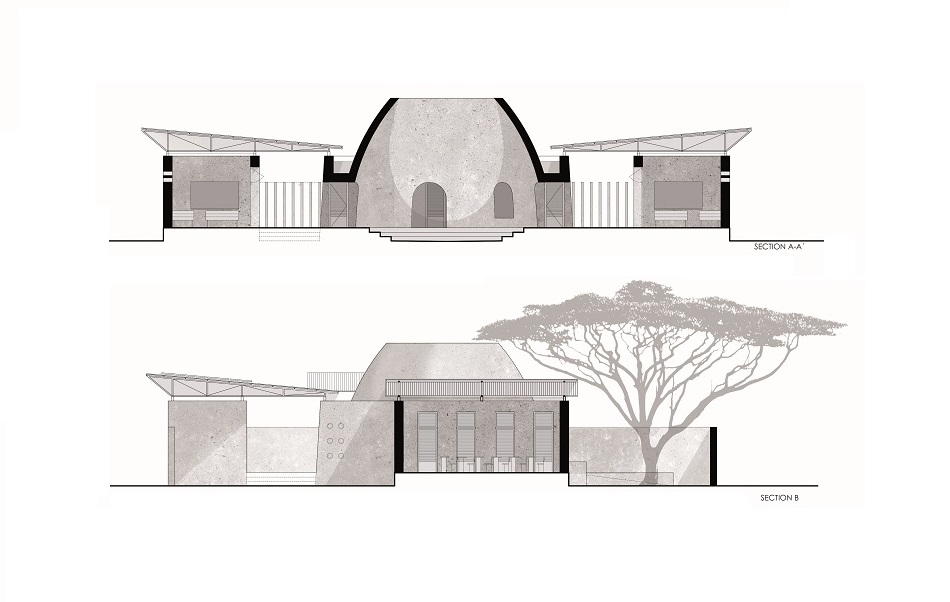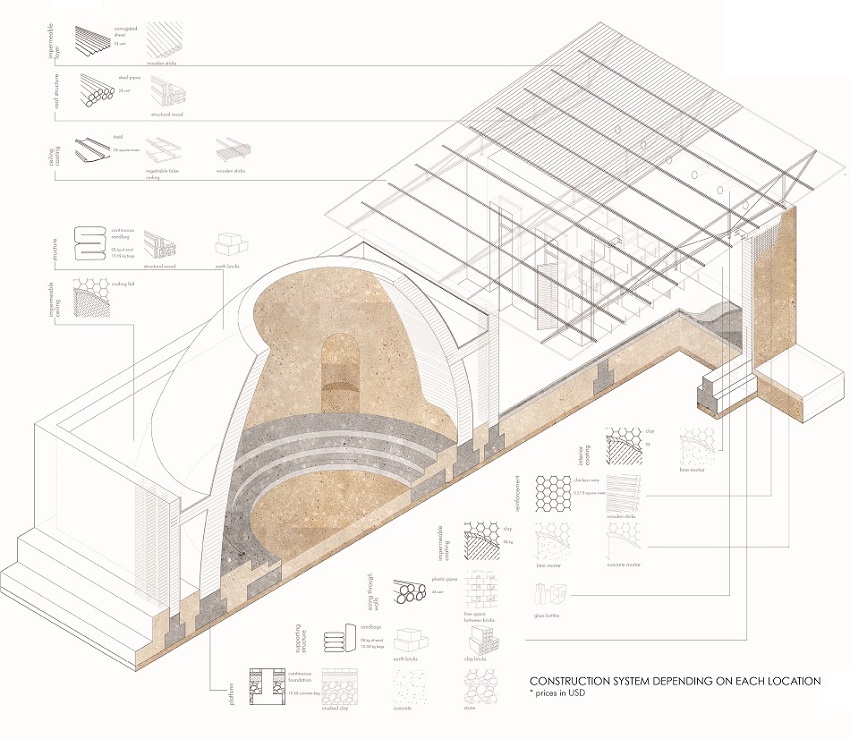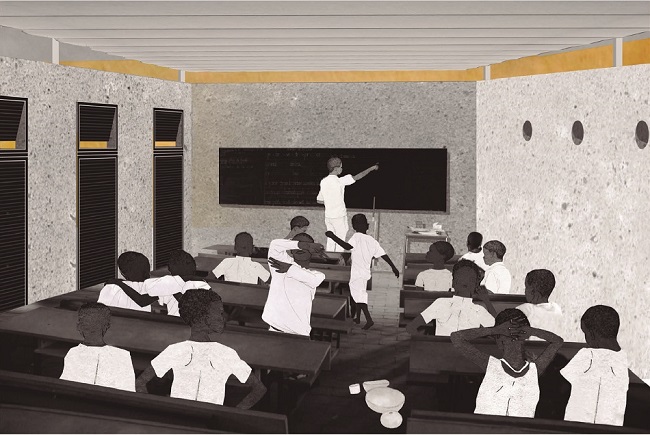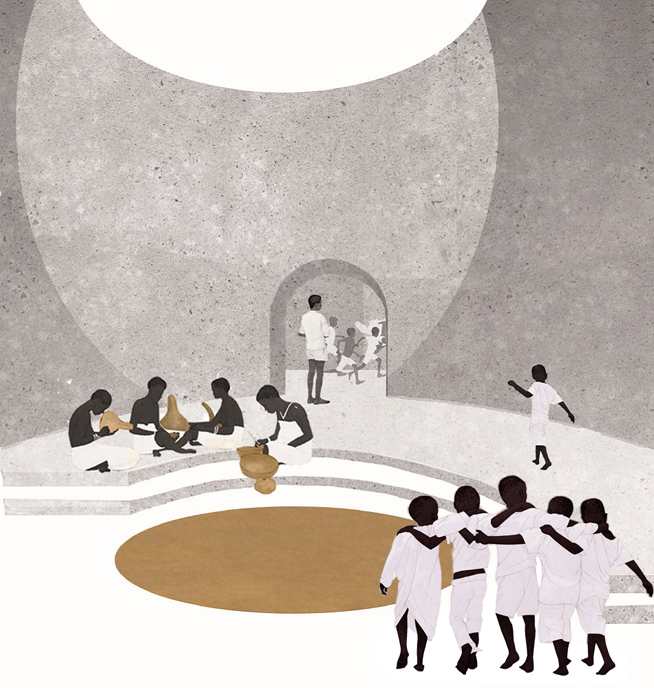☉ Concept project of rural school in Africa is a proposal by Sol89 for Kym Field Schools in 2015. Unrevealed location. Its scale is small with a surface of 450 sqm. Key material is ceramic.
The African tropical savanna is a vast place with a rich cultural and climate diversity. The field school’s project is defined as a prototype that is able to set its roots in different places of the named area, adjusting to the different climates, construction methods and community requirements. The term “radicant” is used in botany to refer to an organism that is capable of adapting to different ecosystems. We recommend that the architecture of these schools resembles that quality of nature: a central core that contains a common meeting space and a water-collecting place.
There is also a modulated and flexible structure that contains the required architectural program, taking into account every different orientation, prevailing winds and plot size as well as the specific placement of each school in the territory. The proposal brings together the symbolic and systemic and aims to take root across the allegorical space of the dome as a meeting place.
At the same time it aims to establish a rational and adaptable structure that develops learning spaces with minimal resources in the best physical and environmental conditions according to each site. From the elevated position of a platform, to control the soil of the site, a central core emerges from the ground. This is consistent for all possible variables of the project. The central core is partially covered with a dome, a traditional assembly and teaching space. Around it, a dense perimeter facilitates the transit to the classrooms, storage rooms, water well and depot (settling tanks and purification) as well as bathrooms (toilets for students and teachers as well as shower). This central space allows the rest of the program to be plugged in (teaching places and teacher accommodation).
Their implementation may vary depending on the conditions of orientation, plot size, number of classrooms (2×30 students, 1×60 or 3×20). It can even increase or decrease over time adding new classrooms to the system from the modulated frame that regulates it. Semi-outdoor areas allow circulation between the nucleus and the orbital parts. They are also recreational and public areas where the community can interact with the landscape.
